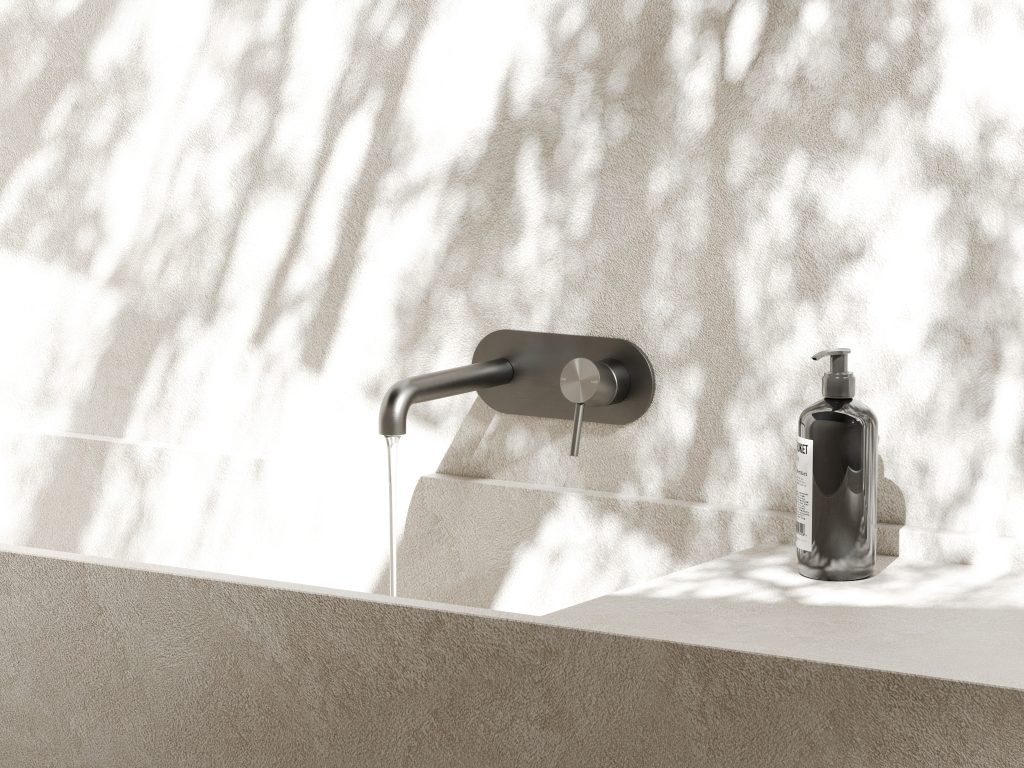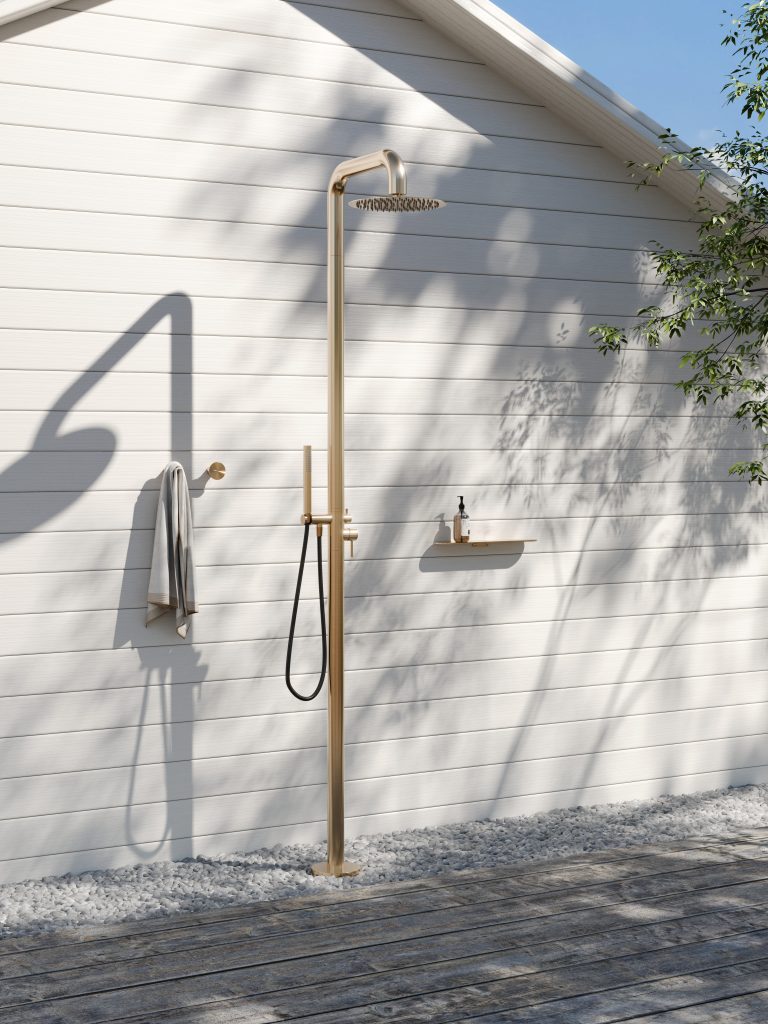Benefits of 316L Stainless Steel for Tapware
INTRODUCTION
Stainless steel is one of the most commonly used materials in architecture, especially for bathroom and kitchen fittings and fixtures.
What some people may not understand is that not all stainless steels are the same. Even though the various grades of stainless steel have some qualities in common, it is important to understand their respective differences to identify the traits that best suit your needs.
One of the most common types of stainless steel is Grade 316 stainless steel. This type of steel has exceptional corrosion resistance, strength, toughness, fabrication qualities, and weldability. There is also a low-carbon version, 316L, which can be specified for harsh environments.
The primary distinctions between these alloys will be discussed in this whitepaper to help you select the ideal option for your indoor or outdoor tapware.
PROPERTIES OF 316 STAINLESS STEEL
Like other steels, stainless steel is made primarily of iron and carbon. However, one of the distinctive properties of stainless steel is a minimum chromium content of 10.5%. This element gives the metal superior resistance to corrosion in comparison to other types of steel.
Steel grades are used to differentiate between various steel types according to their special characteristics. Grade 304 is probably the most used type of stainless steel in the world. Grade 316 comes in second in terms of quantities sold but offers superior corrosion resistance, especially against chlorides and acids.
The key difference is that 316 stainless steel incorporates 2% to 3% molybdenum. The addition of molybdenum enhances the corrosion resistance of austenitic stainless steels.
Due to its corrosion resistance, 316 stainless steel is used in a wide variety of applications, including indoor and outdoor furnishings, commercial kitchens, food production in saline environments, commercial appliances, and more.

COMPARING 316 AND 316L STAINLESS STEEL
Although both 316 and 316L stainless steel alloys are marine-grade steels, there are some significant distinctions between them.
The key difference between 316 and 316L stainless steel is the carbon content. The “L” stands for “low”, which means the material has a lower proportion of carbon in its composition. 316L stainless steel can only have a maximum carbon content of 0.03%.1 The lower carbon content of 316L imparts even better corrosion resistance than 316.
The unique composition of 316L stainless steel makes it suitable for coastal regions where the salt air is likely to corrode other types of metals. This quality enables architects and designers to specify 316L stainless for both indoor and outdoor use. Other architectural benefits of 316L stainless steel include:
• Longevity. 316L stainless steel has an extraordinarily long lifespan. The material can endure severe weather conditions, exposure to harsh chemicals, and is highly resistant to both low and high temperatures.
To further illustrate its resilience, 316L stainless steel is commonly used in chemical and pharmaceutical equipment because it can withstand welding and harsh substances.
• Aesthetic appeal. Moreover, 316L stainless steel gives any architectural design a modern, sleek appearance. With a variety of finishes available, designers have more creative freedom to create sophisticated, stylish spaces that seamlessly connect the indoors and outdoors.
• Weldability. The low carbon content of 316L stainless steel reduces the possibility of carbon precipitation in the welding process. For applications where welding is necessary, this kind of steel is a great option because it is easy to weld using conventional welding techniques. Its ability to be readily repaired in the event of damage adds to its value in architectural applications.
The unique composition of 316L stainless steel makes it suitable for coastal regions where the salt air is likely to corrode other types of metals.
BUILDING SUSTAINABILITY IN STAINLESS STEEL
The right stainless steel can last the duration of the project if it is specified and maintained appropriately. This longevity means stainless steel products need to be replaced less frequently than other common materials, such as plastic or wood. Throughout its life, stainless steel requires very little maintenance, which results in savings on resources, labor and maintenance supplies.
The easy recyclability and steady market demand for stainless steel make disposal quick and easy. The material is 100% recyclable and retains its qualities even after repeated use. It can also be recaptured and recycled into new metal at high rates. Over half of all the stainless steel that is currently in use has been sourced from scrap materials.
Even in the unlikely event that stainless steel ends up in a landfill, it will not harm the groundwater or soil as it is a non-toxic material. In addition, stainless steel is a sustainable choice for interior building applications, as it produces no VOC (volatile organic compound) emissions.
Comparisons of materials often consider data on recycled content, reusability, durability, maintenance needs, energy and water consumption, and impact on indoor air quality and light. In all these categories, stainless steel is consistently one of the most environmentally friendly metals used in construction.
REQUIREMENTS FOR LEAD-FREE TAPWARE
The possible health risks of lead exposure are the main driver behind the push for lead-free tapware. Lead poses serious health risks, especially to children,
leading to developmental delays, learning difficulties, and behavioural issues. Adults who are exposed to lead may experience problems with their kidneys, hearts, or reproductive systems.
In its 2022 update, the National Construction Code (NCC) introduces a new limit for the allowable level of lead in plumbing products used for drinking water. From 1 May 2026, plumbing products made of copper alloy that have more than 0.25% lead in them will no longer be permitted to be installed in plumbing systems that transport drinking water.
The heightened regulation of lead content in plumbing products highlights the need for specifiers to identify certified lead-free tapware. A new Watermark logo will be applied to lead-free, compliant tapware. This logo, which consists of the Watermark “W” logo and the term “LEAD FREE” underneath, will be printed on product packaging and laser etched onto the product’s surface for easy identification.
With a variety of finishes available, designers have more creative freedom to create sophisticated, stylish spaces that seamlessly connect the indoors and outdoors.
ZEN COLLECTION FROM NERO TAPWARE
Crafted from lead-free 316L stainless steel
The Nero brand is set to introduce its latest Zen collection of bathroom products soon, promising to deliver an exceptionally premium bathroom experience.
The distinguishing feature of this collection lies in its use of premium materials, specifically lead-free 316L stainless steel, and environmental adaptability. With a sleek and minimalist design, it is suitable for various upscale settings, creating a bathroom space that is healthy, sustainable and truly captivating.
The entire Zen collection utilises 316L lead-free stainless steel, known for its exceptional weather and corrosion resistance, making it highly suitable for outdoor applications. This material also provides superior strength, ensuring durability and a unique longevity for the products and providing the basis for the Zen collection’s exceptional 25-year warranty.
Made from high-strength, non-toxic 316L stainless steel that adheres to environmental standards, the Zen collection offers a healthy water environment.
Additionally, the 100% recyclability of the Zen series’ 316L material underscores Nero Tapware’s commitment to environmental conservation and sustainable development.
The Zen collection boasts a timeless minimalist design coupled with exceptional craftsmanship, meticulous attention to detail and superior tactile and visual elements. Available in graphite, brushed nickel, brushed gold, and brushed bronze, each colour option boasts excellent weather and corrosion resistance while also meeting various personalised designs.
Equipped with high-end components such as top-grade cartridges, flexible hoses, and aerators, the collection also employs innovative Laminar flow technology. Laminar flow tapware delivers a water stream free of air, resulting in a pristine flow that gracefully fills the sink with minimal splashing. Appreciated for its glass-like clarity, many individuals opt for Laminar flow in their kitchens and bathrooms to enhance the aesthetic appeal of their spaces.




























